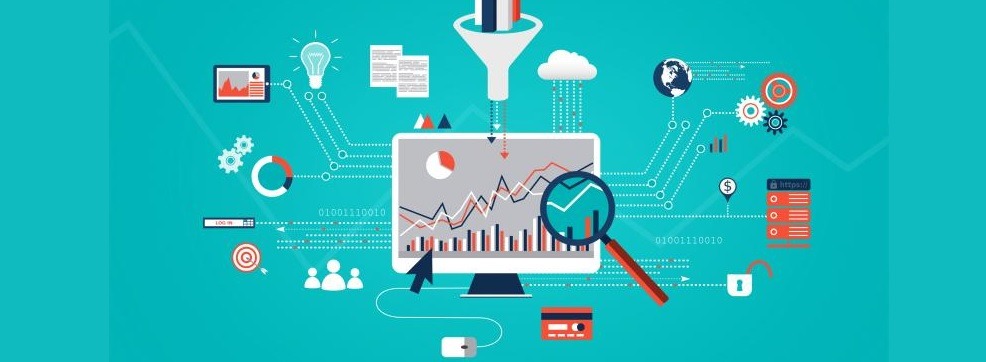So you’re ready to start analyzing data… where should you start? Data analysis is a powerful tool for unlocking hidden value in your business. Successful integration of data analysis requires adherence to some best practices.
This post will explore some of the best practices for data analysis starting with preparation and cleaning, analyzing and interpreting results, and presenting and reporting the results.
For details on the benefits of data analysis, see my previous post titled: How to Leverage Data Analysis for Smarter Business Decisions.
Data Preparation and Cleaning
Businesses must ensure that their data is organized and clean before starting to analyze it. Although it takes time, data preparation and cleaning are crucial for producing reliable findings. This procedure entails a variety of processes, such as locating missing values, outliers, and errors; fixing or eliminating erroneous data; and structuring the data for analysis.
Data preparation and clearing involves several important phases, all of which work to ensure that data is correct and ready for analysis. The first step is for you to locate any errors, outliers, or missing values in the data. This can include missing customer information, flawed transactions, or inaccurate data entry. To ensure that data is accurate, these data concerns need to be located and either fixed or eliminated.
Another key stage in preparation is formatting the data. Data conversion into a standard format, such as translating date information into a standard date format or currency value conversion into a single currency, are two examples of this. In addition to helping standardize data, proper formatting also facilitates analysis and lowers the likelihood of analysis-related errors.
Although it can take some time, data preparation and cleaning are essential phases in the data analysis process. You must ensure the analysis will produce accurate and insightful results by taking steps to properly prepare and clean data.
Analyzing and Interpreting Results
Once the data is ready for analysis, you need to select the best tools and approaches for your business’s unique needs. Powerful methods, like data mining and machine learning, can be used to identify patterns and trends within data sets. Techniques for statistical analysis can be used to compute probability and test hypotheses. Additionally, unstructured text data can be leveraged to derive insights using text analysis and natural language processing.
Finding hidden patterns and trends in large data sets can be made possible by data mining and machine learning methods. Making more educated decisions regarding your business’s operations and strategy are possible with the use of these tools, which can help you identify correlations and linkages between multiple variables.
Alternatively, statistical analysis is a useful tool for estimating probabilities and testing hypotheses. These methods can aid in your comprehension of the value of specific data sets, as well as aid in predicting future trends and results.
Additionally, text analysis and natural language processing (NLP) can be immensely helpful for you to glean insights from unstructured text data. Large amounts of text data can be processed and categorized with the aid of NLP algorithms, making it simpler to spot patterns and trends and uncover insights that would otherwise be concealed.
Whatever strategy you choose, it’s critical to be aware of the benefits and drawbacks of each tool and technique in order to select the one that is most appropriate for your particular needs. Utilization of the appropriate strategy and tools to transform data into insightful knowledge can help you to advance the business and gain a competitive advantage.
For details on popular tools and techniques for data analysis, see my previous post titled: How to Harness the Power of Data Analysis: Tools and Techniques You Need to Know.
Presenting and Reporting the Results
For your business to be successful, you must communicate the results of your data analysis in a style that is simple for decision-makers to understand. The results should be clearly organized and presented with supporting visualizations where appropriate. In order for decision-makers to properly evaluate the findings of your study, it is essential to be open and honest about any limitations or caveats.
Use of visual aids where applicable, such as charts, graphs, and tables, is important to achieving clear communication of data analysis results. Decision-makers will find it easier to understand the outcomes if these visuals are used to quickly express complicated patterns and trends in the data. In order to offer context and promote understanding, the visual aids should also be accompanied by clear, succinct descriptions and explanations of the findings.
Additionally, it is crucial for you to be open and honest about any restrictions or uncertainties in the analysis. This enables decision-makers to properly understand your findings and come to informed conclusions. You can increase trust with the business’s stakeholders and guarantee that choices are made with a full comprehension of the facts by being transparent about any potential biases or limits.
Making good decisions requires clearly and concisely presenting the results of data analysis. The results will be more accurately evaluated and used to guide informed decision-making if there are clear explanations, visual aids, and disclosure of any limits.
Conclusion
Data analysis is a powerful tool that begins with following best practices in the preparation and cleaning of data, analyzing and interpreting the results, and presenting and reporting outcomes. When used properly, you can maximize the benefits of data analysis to create a competitive advantage for your business.
Check back often for future posts that will include more in-depth discussions about applying data analytics to improve your business, including marketing, operations management, resource allocation, product development, and much more. There will also be future posts of some of the ethical and legal considerations of data analysis, specifically touching on topics of data privacy, security, and governance. Along the way, there will be lots of information about taking data analysis to the next level through powerful visualizations. Stay tuned!

